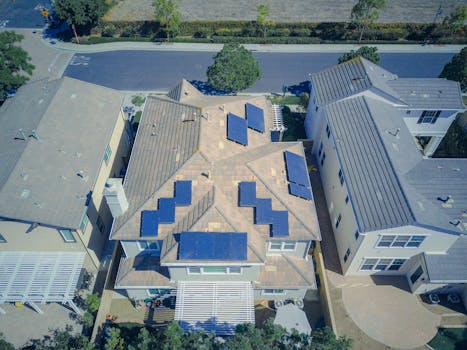“Empower Your Energy: Quick Fixes for Common Solar Battery Troubles!”
Troubleshooting common solar battery issues is essential for maintaining the efficiency and longevity of your solar energy system. As solar batteries play a crucial role in storing energy for use during non-sunny periods, understanding potential problems can help ensure optimal performance. This guide will outline common issues such as insufficient charging, rapid discharging, and battery swelling, along with practical steps to diagnose and resolve these problems. By addressing these challenges promptly, you can enhance the reliability of your solar power system and maximize its benefits.
Battery Not Charging Properly
When it comes to solar energy systems, one of the most critical components is the battery, which stores energy for use when sunlight is not available. However, users often encounter issues with batteries not charging properly, which can lead to frustration and inefficiency. Understanding the common reasons behind this problem is essential for effective troubleshooting.
First and foremost, it is important to check the solar panel connections. Loose or corroded connections can significantly hinder the flow of electricity from the panels to the battery. Therefore, inspecting the wiring and ensuring that all connections are secure and free from corrosion is a vital first step. If any issues are found, tightening or cleaning the connections can often resolve the problem.
In addition to checking connections, one should also examine the solar panels themselves. Dirt, debris, or shading can obstruct sunlight from reaching the panels, thereby reducing their efficiency. Regular cleaning of the panels is recommended to maintain optimal performance. Furthermore, if the panels are shaded by trees or nearby structures, it may be necessary to trim back foliage or reposition the panels to maximize sunlight exposure.
Another common issue that can lead to improper charging is the battery’s state of health. Over time, batteries can degrade due to factors such as age, temperature fluctuations, and improper maintenance. It is crucial to monitor the battery’s voltage and capacity regularly. If the battery shows signs of significant wear or if its voltage is consistently low, it may be time to consider a replacement. Additionally, ensuring that the battery is compatible with the solar system is essential, as mismatched components can lead to charging inefficiencies.
Moreover, the charge controller plays a pivotal role in regulating the flow of electricity to the battery. If the charge controller is malfunctioning or incorrectly configured, it can prevent the battery from charging properly. Therefore, checking the settings on the charge controller and ensuring it is functioning correctly is an important step in troubleshooting. If necessary, consulting the user manual or seeking professional assistance can help clarify any uncertainties regarding the controller’s operation.
Temperature can also impact battery performance. Most batteries have an optimal operating temperature range, and extreme heat or cold can affect their ability to charge effectively. If the battery is located in an area that experiences significant temperature fluctuations, consider relocating it to a more stable environment. Additionally, insulating the battery can help mitigate temperature-related issues.
Lastly, it is essential to consider the overall energy consumption of the system. If the energy demand exceeds the battery’s capacity or the solar panels’ output, the battery may not charge adequately. Conducting an energy audit can help identify any discrepancies between energy production and consumption. By optimizing energy use and ensuring that the system is appropriately sized, users can enhance the battery’s charging efficiency.
In conclusion, troubleshooting a solar battery that is not charging properly involves a systematic approach that includes checking connections, inspecting solar panels, assessing battery health, verifying charge controller functionality, considering temperature effects, and evaluating energy consumption. By addressing these common issues, users can ensure their solar energy systems operate efficiently, ultimately leading to a more reliable and sustainable energy solution.
Inconsistent Power Output

Inconsistent power output from solar batteries can be a frustrating issue for homeowners and businesses alike, as it undermines the reliability of solar energy systems. Understanding the potential causes of this problem is essential for effective troubleshooting. One of the first steps in addressing inconsistent power output is to examine the battery’s state of charge. If the battery is frequently undercharged or overcharged, it may not deliver a consistent power supply. This can occur due to improper settings in the charge controller or a malfunctioning solar inverter. Therefore, checking the settings and ensuring they align with the battery specifications is crucial.
Moreover, the age and condition of the battery itself can significantly impact its performance. Over time, batteries naturally degrade, leading to reduced capacity and efficiency. If the battery is older than its expected lifespan, it may struggle to hold a charge, resulting in erratic power output. In such cases, it may be necessary to consider replacing the battery with a newer model that meets current energy demands. Additionally, inspecting the battery for physical signs of wear, such as corrosion or swelling, can provide valuable insights into its health. If any abnormalities are detected, it is advisable to consult a professional for further evaluation.
Another factor that can contribute to inconsistent power output is the quality of the solar panels and their installation. If the solar panels are dirty, shaded, or misaligned, they may not generate sufficient energy to charge the battery effectively. Regular maintenance, including cleaning the panels and ensuring they are free from obstructions, can help maximize their efficiency. Furthermore, it is essential to verify that the panels are installed at the correct angle and orientation to capture optimal sunlight throughout the day. If adjustments are needed, consulting with a solar energy expert can ensure that the system operates at peak performance.
In addition to these considerations, the overall system design plays a critical role in power consistency. If the solar battery system is not appropriately sized for the energy needs of the household or business, it may lead to fluctuations in power output. Conducting a thorough energy audit can help determine the appropriate battery capacity required to meet energy demands consistently. This process involves analyzing energy consumption patterns and identifying peak usage times, which can inform decisions about battery size and configuration.
Furthermore, the wiring and connections within the solar battery system should be inspected regularly. Loose or corroded connections can lead to voltage drops, resulting in inconsistent power delivery. Ensuring that all connections are secure and free from corrosion can help maintain a stable flow of electricity. If any wiring issues are identified, it is crucial to address them promptly to prevent further complications.
Lastly, environmental factors can also influence the performance of solar batteries. Extreme temperatures, whether too hot or too cold, can affect battery efficiency and lifespan. Therefore, it is essential to monitor the operating environment and, if necessary, implement measures to protect the battery from extreme conditions. This might include installing the battery in a climate-controlled space or using insulation to mitigate temperature fluctuations.
In conclusion, troubleshooting inconsistent power output from solar batteries involves a comprehensive approach that considers various factors, including battery health, solar panel performance, system design, wiring integrity, and environmental conditions. By systematically addressing these areas, users can enhance the reliability of their solar energy systems and ensure a consistent power supply.
Overheating Issues
Overheating issues in solar batteries can significantly impact their performance and longevity, making it essential for users to understand the causes and solutions associated with this problem. When solar batteries overheat, they can suffer from reduced efficiency, accelerated wear, and even complete failure. Therefore, recognizing the signs of overheating and addressing them promptly is crucial for maintaining a reliable solar energy system.
One of the primary causes of overheating in solar batteries is excessive charging. This can occur when the solar charge controller is not properly configured or when it fails to regulate the voltage and current effectively. In such cases, the battery may receive more energy than it can handle, leading to increased internal temperatures. To mitigate this issue, it is vital to ensure that the charge controller is compatible with the battery type and is set to the correct parameters. Regularly monitoring the charging process can help identify any discrepancies early on, allowing for timely adjustments.
Another factor contributing to overheating is poor ventilation. Solar batteries generate heat during normal operation, and if they are installed in a confined space with inadequate airflow, the heat can build up, leading to overheating. To prevent this, it is advisable to install batteries in a well-ventilated area, ensuring that there is sufficient space around them for air circulation. Additionally, avoiding direct sunlight exposure can help maintain a cooler environment for the batteries, further reducing the risk of overheating.
Moreover, the age and condition of the battery can also play a significant role in overheating issues. As batteries age, their internal resistance tends to increase, which can lead to higher temperatures during charging and discharging cycles. Regular maintenance checks are essential to assess the health of the battery and identify any signs of wear or damage. If a battery shows signs of swelling, leakage, or corrosion, it may be time to replace it to prevent overheating and potential hazards.
In some cases, the type of battery chemistry can influence overheating tendencies. For instance, lithium-ion batteries are known for their efficiency and longevity, but they can also be sensitive to temperature fluctuations. On the other hand, lead-acid batteries are more robust but can overheat if not properly managed. Understanding the specific requirements and limitations of the battery type in use is crucial for preventing overheating. Users should consult the manufacturer’s guidelines to ensure optimal operating conditions.
Furthermore, the overall system design can impact battery performance and temperature regulation. An improperly sized solar power system may lead to frequent cycling of the batteries, causing them to heat up more than necessary. Ensuring that the solar panels, charge controller, and batteries are appropriately matched in terms of capacity and output can help maintain a balanced system that minimizes overheating risks.
In conclusion, addressing overheating issues in solar batteries requires a multifaceted approach that includes proper configuration, adequate ventilation, regular maintenance, and an understanding of battery chemistry. By taking proactive measures to monitor and manage these factors, users can significantly reduce the likelihood of overheating, thereby enhancing the efficiency and lifespan of their solar energy systems. Ultimately, a well-maintained solar battery not only ensures reliable energy storage but also contributes to the overall sustainability of solar power as a renewable energy source.
Shortened Battery Life
Solar batteries are essential components of solar energy systems, providing the necessary storage to harness energy for later use. However, one of the most common issues that users encounter is shortened battery life. Understanding the factors that contribute to this problem is crucial for maintaining the efficiency and longevity of your solar battery system.
To begin with, it is important to recognize that battery life can be significantly affected by the depth of discharge (DoD). The DoD refers to the percentage of the battery that has been discharged relative to its total capacity. For instance, if a battery has a capacity of 100 amp-hours and 40 amp-hours have been used, the DoD is 40%. Most solar batteries are designed to operate optimally within a specific DoD range. Regularly discharging a battery beyond its recommended limits can lead to accelerated wear and tear, ultimately shortening its lifespan. Therefore, monitoring your battery’s discharge levels and ensuring they remain within the manufacturer’s guidelines is essential for prolonging battery life.
In addition to managing the depth of discharge, temperature plays a significant role in battery performance. Extreme temperatures, whether hot or cold, can adversely affect the chemical reactions within the battery, leading to reduced efficiency and capacity. For instance, high temperatures can cause the electrolyte to evaporate, while low temperatures can slow down the chemical reactions necessary for energy storage. To mitigate these effects, it is advisable to install your solar battery in a climate-controlled environment, if possible. If your battery is exposed to fluctuating temperatures, consider using insulation or a temperature regulation system to maintain a stable environment.
Another critical factor to consider is the charging process. Overcharging or undercharging a battery can lead to diminished performance and a shorter lifespan. Overcharging can cause excessive heat buildup, which can damage the battery’s internal components, while undercharging can lead to sulfation, a condition where lead sulfate crystals form on the battery plates, reducing capacity. To avoid these issues, it is essential to use a quality charge controller that matches the specifications of your solar battery. This device regulates the voltage and current coming from the solar panels, ensuring that the battery is charged correctly and efficiently.
Furthermore, regular maintenance is vital for ensuring the longevity of your solar battery. This includes checking the battery terminals for corrosion, ensuring that connections are tight, and inspecting the battery for any signs of physical damage or leaks. Keeping the battery clean and free from debris can also help maintain optimal performance. Additionally, performing periodic capacity tests can provide insights into the health of the battery, allowing you to identify potential issues before they escalate.
Lastly, it is worth noting that the type of battery you choose can significantly impact its lifespan. Different battery chemistries, such as lead-acid, lithium-ion, and nickel-cadmium, have varying characteristics and lifespans. Researching and selecting a battery that aligns with your energy needs and usage patterns can make a substantial difference in performance and longevity.
In conclusion, troubleshooting shortened battery life in solar systems involves a multifaceted approach. By managing depth of discharge, maintaining optimal temperature conditions, ensuring proper charging practices, conducting regular maintenance, and selecting the right battery type, users can significantly enhance the lifespan and efficiency of their solar batteries. Taking these proactive steps not only maximizes the return on investment but also contributes to a more sustainable energy future.
Q&A
1. **Question:** What should I check if my solar battery is not charging?
**Answer:** Ensure that the solar panels are clean and unobstructed, check the connections for any loose or corroded wires, and verify that the charge controller is functioning properly.
2. **Question:** Why is my solar battery discharging too quickly?
**Answer:** This could be due to excessive load on the battery, a faulty battery, or a malfunctioning charge controller. Check the load requirements and test the battery’s health.
3. **Question:** What does it mean if my solar battery is swelling?
**Answer:** Swelling indicates overcharging or a potential failure of the battery. Disconnect it immediately and consult a professional for safe disposal and replacement.
4. **Question:** How can I tell if my solar battery is reaching the end of its life?
**Answer:** Signs include reduced capacity, inability to hold a charge, frequent discharging, and physical damage. Testing the battery’s voltage and capacity can also help determine its health.
Conclusion
To troubleshoot common solar battery issues, first check for proper connections and ensure that all terminals are clean and secure. Monitor the battery voltage and state of charge using a multimeter to identify any discrepancies. Inspect the battery for physical damage, leaks, or corrosion, and ensure that the battery is compatible with the solar system. If the battery is not charging, verify that the solar panels are functioning correctly and that the charge controller is set up properly. Regular maintenance, including cleaning and periodic testing, can help prevent issues. If problems persist, consult the manufacturer’s guidelines or seek professional assistance.




